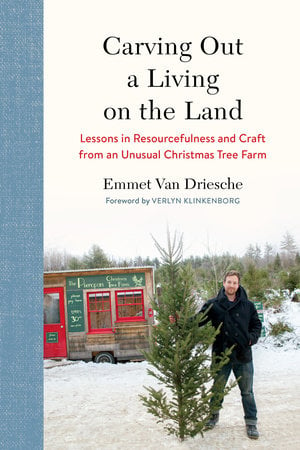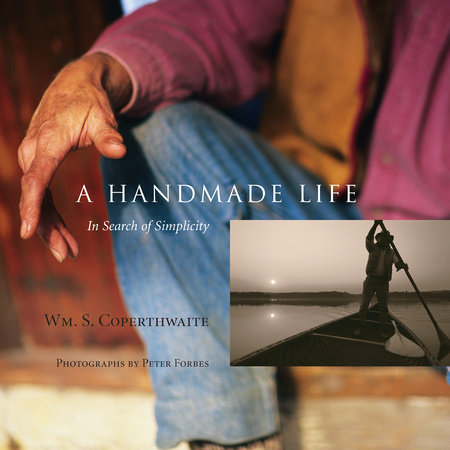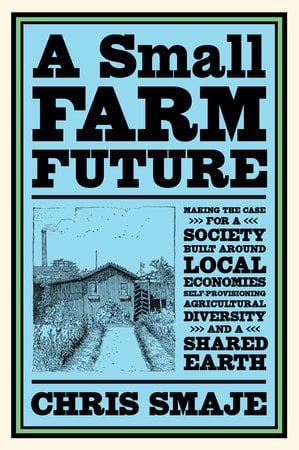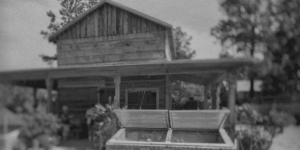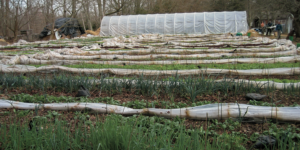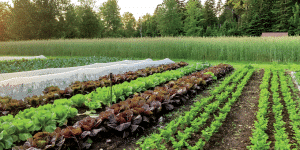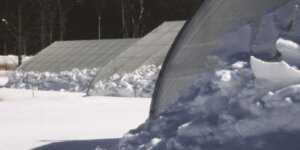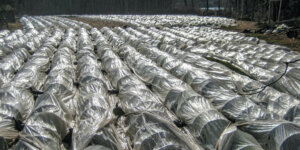Becoming a Maker: A Material Connection
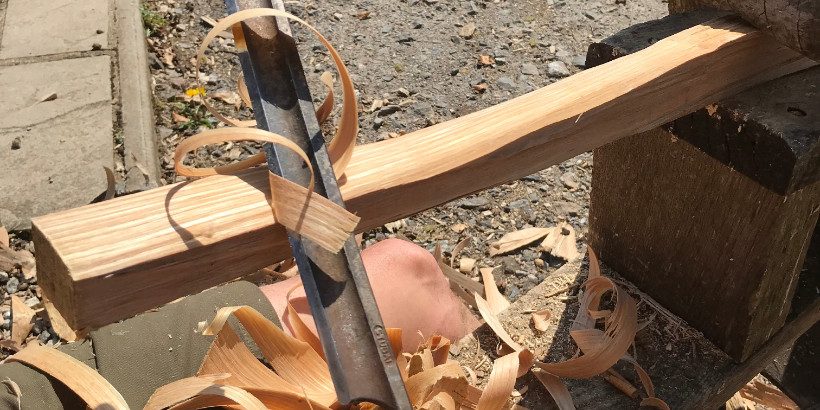
In our present age of computer-assisted design, mass production and machine precision, the traditional skills of the maker or craftsperson are hard to find. Yet the desire for well-made and beautiful objects from the hands (and mind) of a skilled artisan is just as present today as it ever has been.
Many of us harbor a deep and secret yearning to produce something – to build or shape, to imagine and create our own objects that are imbued not only with beauty and functionality, but with a story and, in essence, a spirit drawn from us. Nick Kary understands this yearning. For nearly four decades he has worked on commission to make fine, distinctive furniture and cabinets from wood, most of it sourced near his home, in the counties of South West England.
The following excerpt is from Material by Nick Kary. It has been adapted for the web.
There was a moment many years ago when I took a leap of faith and sought to find a connection to something that ‘mattered’.
I had just finished my degree and wondered what it had all been about. The only solid, powerful thing I could connect with was the ground beneath my feet.
In that moment I remembered my English grandad and his earthiness and how much I enjoyed the tinkering we had done together. I knew I needed to become a maker. I needed a physical connection to the material, and not more mind-centred meandering. I needed to touch and feel the body of a thing, and I wanted to learn how to transform wood into objects of beauty and utility. I needed centring, and the dignity and physicality of the making process seemed to be my answer.
I embarked on a road whose curves and undulations were unpredictable.
I learnt the hard way, first as a designer, manufacturer and supplier and later as a designer-maker. This is path I have remained on, originally trained through apprenticeship and at college, and then by the lessons of what works, and what doesn’t. My body has slowly learnt a new language, and my mind has grown beyond my brain. I now make furniture crafted from local hardwoods, each piece bearing the marks and character of the original tree.
When I was trained we removed all the ‘imperfections’ that were left in the often imported woods supplied to us ‘straight-edged’ and uniform. The idea of what was perfect seemed almost unattainable, far away from the dictionary definition of ‘bringing something to completion’. The years of relationship with my craft have been a journey of discovery, and the idea of what should be has slowly dissolved into the simplicity of what is.
I think often of my English grandad, as it was with him as a child that I began to experience the joys of tinkering in the workshop. He died when I was eighteen, and in the normal self-obsessive behaviour of a young man, I did not dwell on him much at the time, but a few years later, just before I graduated, the memories of him flooded back.
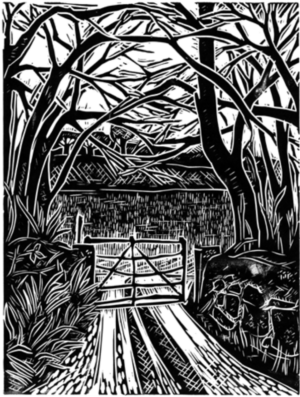
We are having afternoon tea in the living room of my grandparents’ small, semi-detached house in Hertfordshire. My grandmother in her flowered apron is putting a plate of freshly baked biscuits on the small mirror-polished Mahogany side table.
Tea is served from the china teapot in little porcelain cups that I could never quite work out how to hold. My grandad’s nicotine-stained fingers stand out in my memory as he quietly sits there, cup in hand, silent and thoughtful.
My grandmother fusses and chats, the sweet smell of her baking still wafting in from the open kitchen door. All the while I am wondering if my grandad has forgotten his promise, whether his withdrawn state will give way to sleep, leaving me alone amongst the polished brass and darkened beams.
Yet with perfect grace and timing he excuses us both and encourages me out of the living room. I follow this kindly and enigmatic man, excited by the prospect of what lies ahead. We leave the kitchen, my grandma’s domain, replenished by her material display of love.
The biscuits were always a sweetener, a manifestation of what couldn’t be put into words.
Soon we are outside, the well-nurtured rear garden and hidden pond a testament to the old man’s love of making. We slip through the side door of a 1930s garage with a narrow workbench on one side, just enough room to accommodate his old grey Ford Anglia.
That very car would put an end to his driving ambitions, as some years later he would drive it right through the rear wall of this garage, after which it arrived at our house to become the tortured object of my own driving ambitions. It isn’t in his garage now, just the long, well-used bench, two vices attached to it.
A smell I am so familiar with, yet have no adequate words for, hangs in the air, something between used car oil and fresh wood dust. My grandad is standing by the bench, his movements slow and deliberate, his fingers busy in his tobacco tin, rolling another cigarette (one of sixty or more a day, a habit that ultimately led to his death). It is an intent meditative action, assured and dextrous, honed by constant repetition.
Soon the tobacco smoke is in my nostrils, filling the garage, and to this day it gives me comfort. It represents measured behaviour and slowing down and calming. Before I start working in my shop, I will often smoke a pipe in his memory, for the feel of the bowl, the connection to the process and the invitation to calm. I feel the warm bowl in my hand as I write this, the smoothness of the burl, the tricks of light its grain plays on my eyes, its material presence helping connect me to mine in this moment.
Only now does he allows me to see a wicked grin. From below the bench he deliberately pulls out another green tobacco tin, this one clanking sharply as he places it on the oily benchtop. Opening it, he turns to look at me, the half-smile back again, both of us complicit in what is to come. The door is shut and we are alone. I know that what is to come is a performance. It is for me. Yet it is of and from him, as it will speak of his past for which he has no words.
The lid is off, lying on its back alongside the open tin. Inside the tin is a small selection of pointed brass tubes, bullets that he kept from the First World War, in which he had served. He served at Gallipoli and in Africa as a sniper in the First War, and in the Second he was part of the Home Guard and a stalwart member of the local community, training volunteers in the safe demolition of damaged houses. He was awarded the military cross in the First World War, and commended elsewhere for his marksmanship and carpentry skills.
He carefully takes one bullet and places it in the jaws of the metalworking vice. The pointed and deadly end stands up above the jaws. Aware of my absolute focus on his movements, he takes delight in his performance, slowly reaching for a pair of burnished steel pliers that were laid neatly on a shelf above the bench. He takes them, places them around the head of the bullet and in one deft movement removes it from its casing.
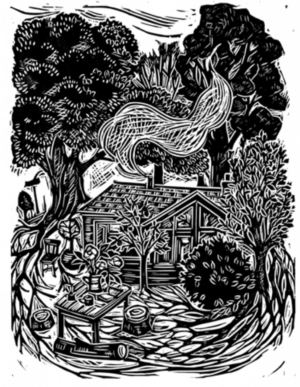
He then releases the casing from the vice, turns it upside down and retightens the vice. With an intense look in my direction, he picks up a centre punch and places it on the firing cap, nodding to me that it is now my turn. ‘Come on, lad’, his eyes say in their kindly way.
I raise the hammer, nervous that I should hit it square, and hovering momentarily I bring it down on the punch, striking it a little askew. There is a sharp uttering and a rush of air as the strike ignites the explosive, and a small puff of smoke wafts away from the vice. I look at him with some alarm, and he, catching my eye, mischievously lets out a restrained yet infectious peal of laughter.
When I recall this moment and the many others like it, I am caught somewhere between nervous tension and ecstatic delight.
Soon we are at the threshold of the kitchen again, welcomed by the stern look of my grandma. She scans us from head to toe on our re-entry, to ensure that we will both thoroughly clean ourselves. That memory has never left me, and by retelling it to my children, I make sure that it never will.
I feel connected to my grandad through this memory, but also through the object, the bullet. The bullet’s matter has become the matter of my memory, and with it my memory jumps across the Channel to the land of my other grandfather. While one grandfather fought the Turks at Gallipoli, the other fought the Russians in the Carpathian Mountains and Eastern Poland. I never knew him, nor did my father.
Yet I do have in my possession six hundred glass stereoscopic slides taken on the Russian front while he served as an officer in 1914–15. These slides are material for my own constructed narrative about him, and along with some domestic pictures, they are all I have to remember something for which there are no stories.
I take a similar view regarding what I have lost in terms of relationship to the natural world around me and my interaction with it. As a young man I had a feeling of disconnection, of a profound separation between the self I identified with and a sense within me that there was something more, something greater for me.
This sense led me to become a maker, and has thus connected me to my body and spirit and to the materials I use, where they originate from, and the impact their extraction may have. So, as I sought to reconstruct a relationship with my fractured social history and family narrative, I have also sought to reconstruct my relationship with the physical world around me.
The question that repeats itself is: What is the material I work with, and how does my engagement with it affect the material of my own existence, my own place here?
Recommended Reads
Recent Articles
Building a cold frame is a simple way to extend your planting and growing season! They last for years, allow you to garden earlier in the spring and let you extend the growing season by protecting tender vegetables from frost.
Read MoreGrowing year-round is a challenge, but it’s not impossible. Follow these growing tips, and you’ll be well on your way to growing year-round!
Read MoreNo heated greenhouse? No problem! Discover the secrets to thriving winter gardening without breaking the bank.
Read MoreYear-round growth without the hefty price tag of a greenhouse? Low tunnels are the cost-effective and flexible solution you’ve been looking for. Grow year-round with low tunnels!
Read More

